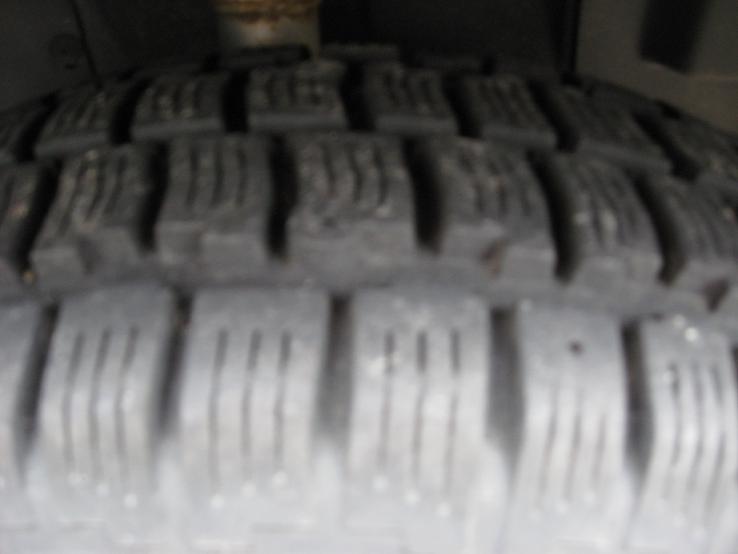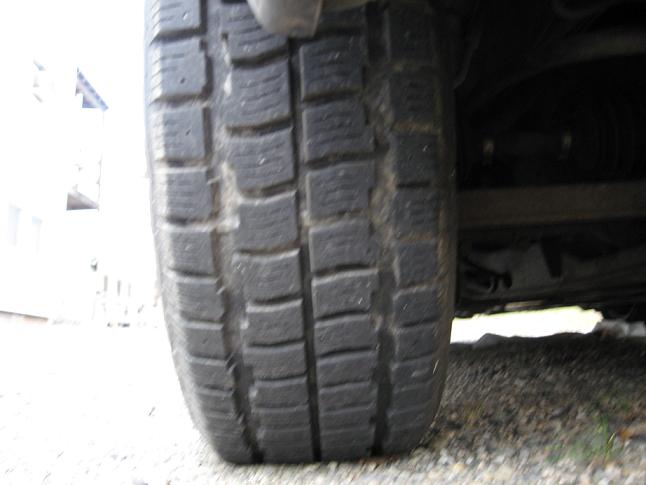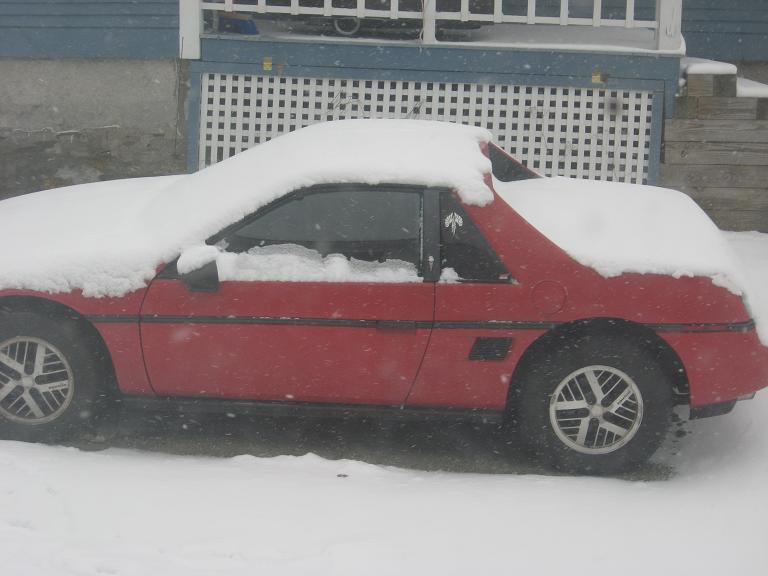I didn't want to bury this inside another thread where it might get lost, but a few suggestions from all my years driving in the fun and exciting roads of New England, which were often un-plowed and un-sanded. That said:
General Theory:
Not all tires are created equal. Different tires serve different purposes, and the tread patterns and rubber compounds used to make the tires vary accordingly. All-weather tires are not the best thing to have if you feel you will need to daily drive your Fiero through the bad weather season.
A dedicated winter snow tire has a more aggressive lug design, and channels materials differently than an all weather tire. Also, they will have lower mileage ratings because of being made with a softer rubber compound. The thought process behind this is that cold rubber grips less than hot rubber when you find the cold asphalt surface on a snowy road. The softer rubber compound which wears away quicker, but, doesn't get as hard in the cold and acts more like a your tire would during the summer time, helping it stick to the pavement better when the roads are clear. There's a reason they heat up tires in by going through the water trap on a drag strip and doing a burnout to heat the rubber, making it softer, remember that.
Selecting a winter tire:
I'm a big fan of the old fashioned large aggressive lug myself. HOWEVER: pick the tire that best suits the road conditions for your area. In northern New England, our roads were usually snow, packed snow, or plowed clear. Rarely did we have a pile of slush sitting around. This is an important consideration, because slush/ice will need a different tire to be optimal than pure snow. Here is where I insert some pictures to illustrate, showing some of my snow-dedicated tires, explaining what made them good, why I picked them, and some limited downsides to the sort I chose.
Picture one:

Looking at this view of the tire, you see deep tread depth, and some imprinted slits inside the lugs themselves. The intent of a snow tire is to grab and hold as much snow as possible between the lugs. With a snow tire, you are trying to hold that snow trapped, because just like when you make a snowball or snowman, your traction doesn't come from the rubber sticking to the frozen water, it comes from the snow trapped inside the tire sticking to other snow.
When you make ice cubes in those flexible rubber trays, the ice cube doesn't stick to the rubber right? Just pops right out? Tires are the same way, rubber tires don't sticks to the snow on the road, it just traps it and uses the trapped snow to hold itself to the roadway.
This is the reason for those little slits as well. They fill with snow or build ice in side, which also grips the snow. It allows that flat rubber surface to have some kind of frozen water that transforms it into something that can grip snow/ice on snow/ice, instead of just being a flat surface of no traction. These are an important feature of a winter tire that all-season or performance summer tires (like you might find on someone's corvette or camaro) are lacking.
Picture #2:

Here you see a picture of the lug pattern. Notice several things here as well. Large, well spaced lugs with lots of area to trap snow in between them. Also notice the wide front-to-back channels that have irregular sides. This helps keep the car tracking in a straight line, HOWEVER also have irregular edges which aids in keeping the tire from skidding forwards as if ti was on mini-snow rails. Also note how the horizontal tread is wide deep channels, intended to keep the tire from just slipping forward and reverse.
Equally important is that the channels that run from side to side within the lugs have a wavy design, not straight in any direction, and in fact, the grooves do NOT line up with one another. this makes it so that the material being trapped cant be squirted out to the sides, and instead remains in place to be compressed as the car drives over it creating a nice firm snow to snow contact.
NOTE: that portion of the design feature is IMPORTANT for a SNOW tire. Performance and all-weather tires are designed to channel water away, not hold and trap materials inside. However, the degree of trapping you wish will to a degree decrease your wet road and SLUSH performance, where you want the fluid directed away from the tires.
These tires I posted are an old fashioned, highly aggressive design made for terrific snow contact. You can even see the holes where they could have been studded had I desired, I actually had a second set that only goes on during ice conditions that are studded.
Warnings:
* Snow tires are noisier, and are not the high performance speed rated tires you are used to.
* Snow tires do not give the same smoothness of ride typically as all season passenger tires
* Snow tires do not usually have spectacular tread life due to the different compounds used in their construction
* Snow tires are best in a higher profile, taller sidewall design which will affect feelings of body lean/roll if you drive aggressively
* Snow tires should be replaced sooner to ensure deep treat depth than the 3/32 standard, shallow tread reduces effectiveness
* Snow tires are not intended to allow you to drive the way you might on a sunny august afternoon. They just aid in better traction ability
Also, this is just my opinion and what I learned from driving winters, and family who spent their entire life working for Uniroyal. Take it as such, just an opinion intended to help, and talk to an independent tire professional in your location about your specific needs and desires. I recommend even if you do not buy from them, visit the small locally owned independent shops over a national chain - those guys not only deserve the business and will take care of you, but its their livelihood instead of just a job like the big guys... they are very knowledgeable and will help you pick something to suit your needs, and are there to help. If the price isn't right, then buy elsewhere, but they usually have a better selection and ability to get these harder to find old-style specialty tires.
If I remember anything I forgot, I will post it later, just figured I'd throw this out there for now. Hope it helps and informs someone.





























